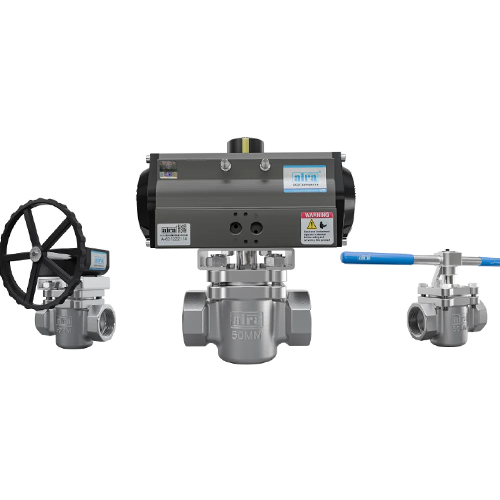
Introduction
Process safety is a critical aspect of industrial operations, especially in sectors such as oil and gas, chemical processing, power generation, and water treatment. The proper selection and use of valves play a significant role in ensuring safety and efficiency. Among various types of valves, actuated plug valves stand out due to their reliability, quick response time, and ability to handle diverse fluid types. This article explores how an actuated plug valve contributes to enhanced process safety in industrial applications.
What Are Actuated Plug Valves?
An actuated plug valve is a type of quarter-turn valve that uses a cylindrical or tapered plug to regulate the flow of liquids or gases. The valve is equipped with an actuator, which automates its operation and eliminates the need for manual intervention. Actuators can be pneumatic, electric, or hydraulic, depending on the application requirements.
Key Ways Actuated Plug Valves Enhance Process Safety
1. Reliable and Fast Operation
In emergency situations, such as sudden pressure surges or leaks, the ability to quickly shut off flow is crucial. Actuated plug valves provide rapid opening and closing mechanisms, reducing reaction time and preventing potential hazards. The automation ensures that the valve operates consistently without delays caused by human intervention.
2. Reduced Risk of Human Error
Manually operated valves rely on personnel for adjustments, which increases the risk of operational mistakes. Automation through actuated plug valves minimizes human error, ensuring that the valves operate as intended under predefined parameters. This improves safety by preventing accidental valve misalignment or improper shutdowns.
3. Leak Prevention and Tight Sealing
Leakage of hazardous fluids or gases can pose significant safety risks, including fire hazards, toxic exposure, and environmental contamination. Actuated plug valves are designed to provide tight shut-off capabilities, effectively preventing leaks. Their durable sealing mechanisms make them suitable for handling corrosive and high-pressure media without compromising integrity.
4. Fail-Safe Mechanisms
Actuated plug valves can be designed with fail-safe features such as fail-open or fail-closed configurations. These mechanisms ensure that the valve moves to a predetermined safe position in case of power failure, actuator malfunction, or other unexpected system disruptions. This is particularly beneficial in critical applications where uncontrolled fluid flow could lead to catastrophic failures.
5. Remote Operation and Monitoring
Modern actuated plug valves can be integrated with digital control systems, allowing operators to monitor and control valve performance remotely. This reduces the need for personnel to manually operate valves in hazardous environments, enhancing workplace safety. Real-time monitoring also helps in early detection of anomalies, enabling prompt corrective actions.
6. Compatibility with Hazardous and Harsh Environments
Industrial environments often involve extreme temperatures, high pressures, and corrosive substances. Actuated plug valves are constructed from robust materials that can withstand these harsh conditions while maintaining operational efficiency. Their ability to function in demanding environments reduces the likelihood of equipment failure and process disruptions.
7. Prevention of Overpressure and System Failures
Excessive pressure buildup in pipelines can lead to equipment damage or explosions. Actuated plug valves help regulate pressure by providing precise flow control. When integrated with pressure sensors and automated systems, these valves can respond instantly to prevent overpressure situations, enhancing overall process safety.
Best Practices for Maximizing Safety with Actuated Plug Valves
To ensure that actuated plug valves contribute effectively to process safety, industries should follow best practices such as:
- Regular Maintenance and Inspections: Periodic checks and servicing of actuated plug valves help identify potential wear and tear before they lead to failures.
- Proper Installation and Sizing: Selecting the right valve size and ensuring correct installation prevents issues related to improper flow control.
- Use of Certified Components: Ensuring that actuated plug valves meet industry safety standards enhances reliability and compliance with regulations.
- Integration with Safety Systems: Connecting actuated plug valves with automated control systems and emergency shutdown mechanisms further enhances process safety.
Conclusion
Actuated plug valves play a crucial role in enhancing process safety across various industries. Their automation, reliability, tight sealing capabilities, and fail-safe features contribute to preventing accidents, reducing operational risks, and improving overall system efficiency. By electing and maintaining high-quality actuated plug valves, industries can significantly enhance safety while optimizing performance in critical applications.